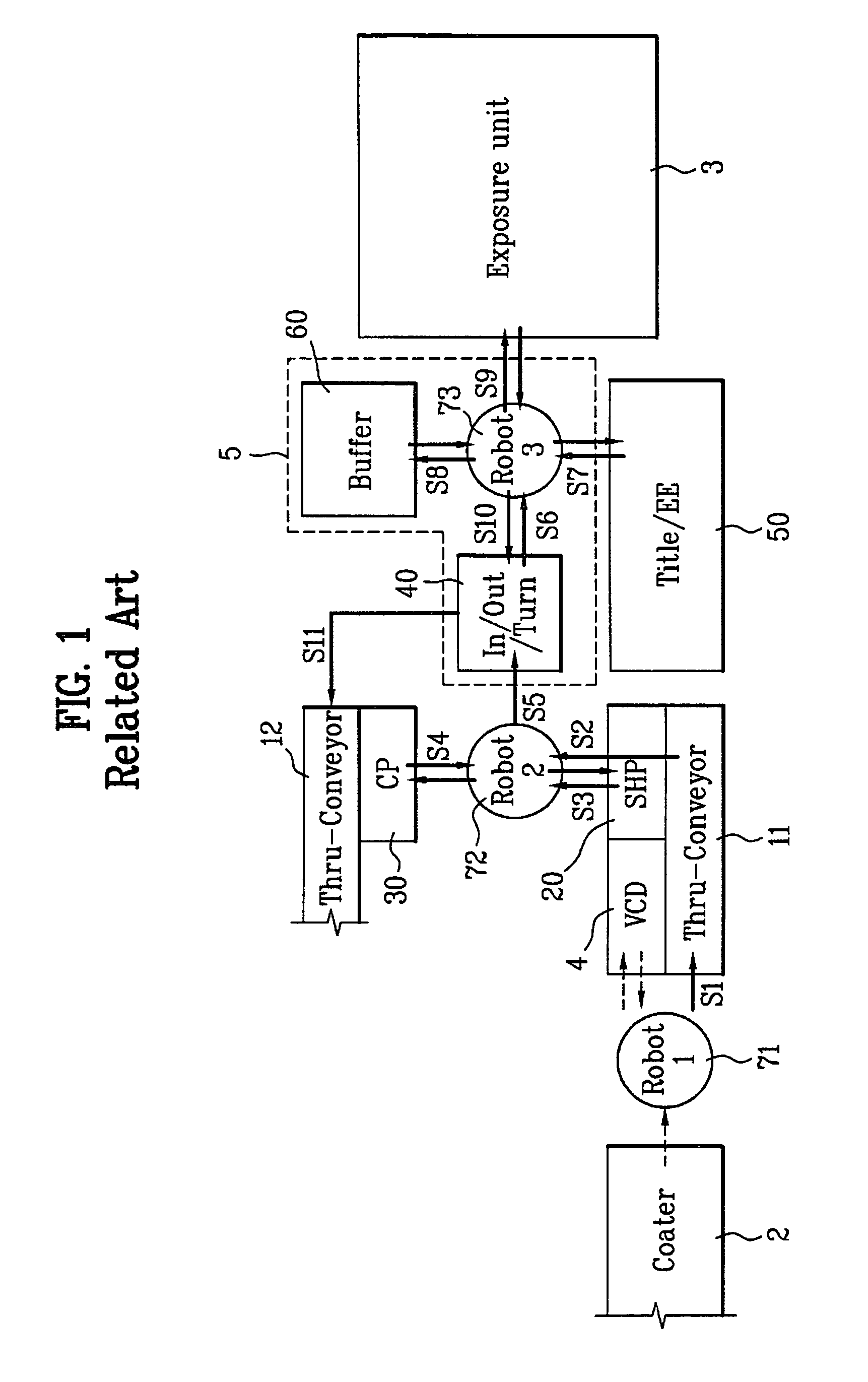Method of carrying out an exposure process for a liquid crystal display device
- Summary
- Abstract
- Description
- Claims
- Application Information
AI Technical Summary
Benefits of technology
Problems solved by technology
Method used
Image
Examples
first embodiment
FIG. 2 is a block diagram of an exposure layout according to the
As shown in FIG. 2, an exposure layout according to the first embodiment may include a thru-conveyor 100, a first robot arm 710, a second robot arm 720, a third robot arm 730, a hot plate (solvent removing unit) referred to as a softbake hot plate (SHP) 200, a cool plate 300, a buffer 600, a temperature control unit 800, and an exposure unit 3.
The thru-conveyor 100 may convey a substrate coated with photoresist. Also, the first robot arm 710, the second robot arm 720 and the third robot arm 730 may load and / or unload the substrate. The SHP 200 may remove solvent from the substrate coated with photoresist. Then, the cool plate 300 may receive the substrate from which the solvent is removed, and lowers the temperature of the substrate. After that, the buffer 600 may temporarily store the substrate having the lowered temperature before applying the exposure process to the substrate.
In case of the related art, only one side...
second embodiment
FIG. 3 is a block diagram of an exposure layout according to the
In the exposure layout according to the second embodiment, as shown in FIG. 3, a first robot arm 710, a thru-conveyor 100, a second robot arm 720 and the CP 300 may be sequentially arranged along one line, from a plan view perspective. Also, the temperature control unit 800 and the CP 300 may be provided in two parallel rows. Also, the buffer 600, a third robot arm 730 and an exposure unit 3 may be sequentially arranged along one line. From a plan view perspective, the temperature control unit 800 and the third robot arm 730 may be arranged along the same vertical line. That is, from a plan view perspective, the third robot arm 730 may be positioned over the temperature control unit 800. The buffer 600 and the second robot arm 720 may be arranged along the same line. That is, from a plan view perspective, the buffer 600 may be positioned over the second robot arm 720.
A method for performing the exposure process in the e...
PUM
 Login to View More
Login to View More Abstract
Description
Claims
Application Information
 Login to View More
Login to View More - R&D
- Intellectual Property
- Life Sciences
- Materials
- Tech Scout
- Unparalleled Data Quality
- Higher Quality Content
- 60% Fewer Hallucinations
Browse by: Latest US Patents, China's latest patents, Technical Efficacy Thesaurus, Application Domain, Technology Topic, Popular Technical Reports.
© 2025 PatSnap. All rights reserved.Legal|Privacy policy|Modern Slavery Act Transparency Statement|Sitemap|About US| Contact US: help@patsnap.com



